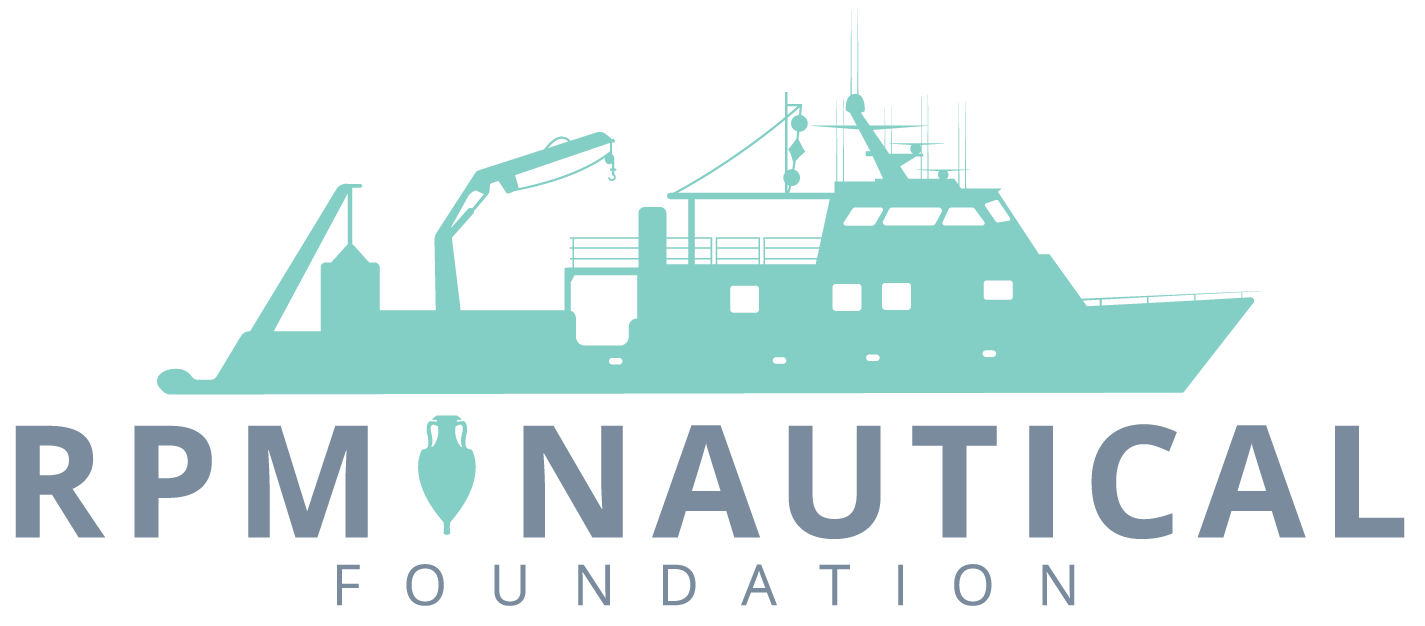Implications for the Interpretation of Nearby Sites
During underwater survey around Crotone, Calabria, Italy, in 2005, structures from two harbour phases were located, possibly dating from the Archaic Greek and Roman periods. Both harbours are close to the Greek and Roman architectural remains on Capo Colonna, as well as to underwater deposits of large stone blocks and other, previously-excavated sites. With the discovery of these harbour structures, new hypotheses arise for understanding the building-material deposits and excavated sites. A critical component of these hypotheses is the assessment of local geological data, specifically ancient sea-level, in relation to the archaeological record.
In 2005 RPM Nautical Foundation conducted a survey along the Ionian coast of Calabria, Italy. Beginning at the town of Crotone, the survey area extended approximately 35 km to the south and south-west past Capo Rizzuto (Fig. 1). The project was carried out in conjunction with the Archaeological Superintendent’s Office of Calabria, represented by Drs F. Prosperetti and A. Zaratinni, the Institute of Nautical Archaeology (INA), and Texas A&M University graduate student Dante Bartoli. Among the project’s goals were to map and document known and newly discovered sites. The structural remains of harbours as well as five deposits of architectural building materials were located and recorded in the c.3-km Punta Scifo-Capo Colonna area (Fig. 2; Table 1). Three of these deposits were already known to the Superintendent’s office. Although other sites were discovered and mapped in the overall survey area, this paper will focus only on the sites in the Punta Scifo-Capo Colonna area. The subsequent analysis of the harbours’ locations, as well as their probable periods of operation in the context of the area’s geological history, provides a new interpretative context for the building-material deposits. This study attempts to form hypotheses regarding the formation and deposition of these sites by taking into account the archaeological, geological, and historical evidence.
Methodology
Multibeam survey was conducted by RPM Nautical Foundation’s research vessels R/V Hercules and R/V Juno. The Juno surveyed from near shore to the 30-m contour, while the Hercules surveyed between the 30- and 60-m contours. Multibeam data was processed on board the Hercules and reviewed for potential sites, which were investigated by divers and a remote operated vehicle (ROV).
The sites in this study were shallow and explored by divers, who employed hand-fanning and metal-detectors and recorded each site by taking photographs and sample measurements. Overall site measurements were obtained in the models derived from the multibeam data.
Previous archaeological investigations
Prior to the 2005 expedition there had been several surveys and excavations within the study area. One of the first formal expeditions was Paolo Orsi’s excavation of a site off Punta Scifo in 1908, 1909, and 1915 (Orsi, 1921). This site was c.50 × 50 m, c.200 m offshore and 6–7 m deep. An estimated 150 tons of whole or broken marble objects were recovered from this large area, including basins, columns, blocks, stands, tables, and altars. Ship timbers were recorded among the marble objects, including oak and light-coloured planks with iron bolts and treenails connecting them to frames (Orsi, 1921: 493–4), construction characteristics typical of the Roman era. An inscription on one column, now in the Capo Colonna museum, places its manufacture at c.200 AD (Degrassi, 1952: 55–6). Much of the material from this find now decorates a roundabout in Crotone (Fig. 3). About 7 km south of Capo Colonna is Capo Cimiti where, in 1959, a purported cargo of five columns was discovered less then 50 m offshore at a depth of c.8.5 m (Franciscis and Roghi, 1961). These were mapped and confirmed in our survey. Samples from the columns, which probably date to the Roman period, indicate that the marble is cipollino (Pensabene, 1978: 105). Pensabene also continued the study of the Punta Scifo finds when, in 1975, he catalogued Orsi’s finds, housed in various local museums, and recorded numerous other marble objects still on the site (Pensabene, 1978). This revised catalogue provided more comprehensive descriptions for many pieces and confirmed Orsi’s dating of the site. Over the following three decades, little systematic work was carried out in the area, although several large piles of blocks were widely known to rest near the shore. In 2003 Dante Bartoli brought this area to the attention of INA, and which led to this 2005 survey project. Although some sites were generally known to the Superintendent’s Office and locally, there were no existing site-names, so each site was designated within the project’s site numbering scheme to facilitate discussion and analysis.


 Finds from the 2006 Turkish Coastal Survey
Finds from the 2006 Turkish Coastal Survey